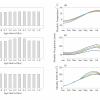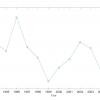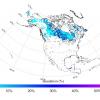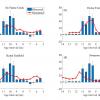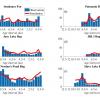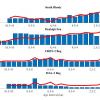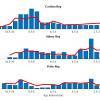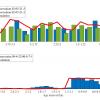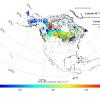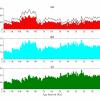Description
This dataset contains the files required to reproduce all the figures presented in the paper Modeling Holocene Peatland Soil Carbon Accumulation in North America. All figures are produced by Matlab. The scripts are *.m files while the input data could be *.txt or *.mat files.
Peatlands are important sources and sinks for carbon-based greenhouse gases. The quantification of their carbon accumulation still has a large uncertainty due to large data gaps and lack of process-based modeling tools. Here, a process-based biogeochemistry model developed for peatland ecosystems was calibrated based on peatland site-level data of long-term peat C accumulation rates. The model was then applied to quantify the C accumulation rates and stocks within North America peatlands over the last 12,000 years. We estimated that 85-174 Pg C were accumulated in North American peatlands over the study period including 0.37-0.76 Pg C in subtropical peatlands. Our model suggested that during the period from 10,000 to 8,000 years ago, the warmer and wetter conditions might have played an important role in stimulating peat C accumulation by enhancing plant photosynthesis. Enhanced peat decomposition due to warming slowed the C accumulation through the rest of the Holocene.
Cite this work
Researchers should cite this work as follows:
- Zhuang, Q.; Wang, S.; Zhao, B.; Aires, F.; Prigent, C.; Yu, Z.; Keller, J. K.; Bridgham, S. (2020). Modeling Holocene Peatland Soil Carbon Accumulation in North America. Purdue University Research Repository. doi:10.4231/8GEV-2P56
